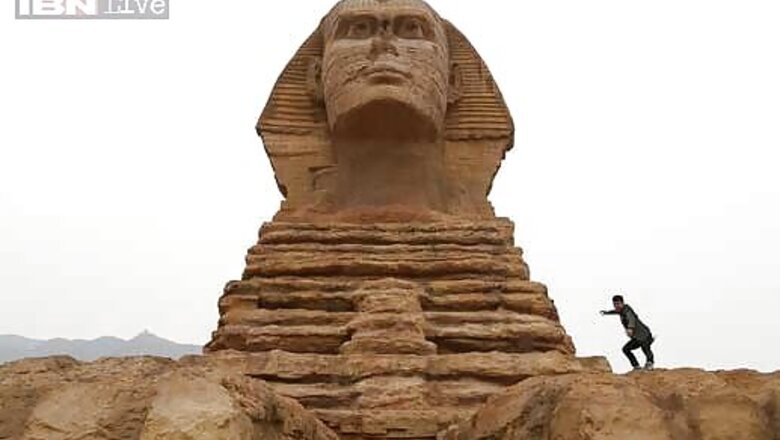
views
Athens: Archaeologists excavating the tomb of Amphipolis in northern Greece have uncovered the head of one of the two sphinxes that guard the entrance to the site which dates back to the time of Alexander the Great.
The head was found in the third chamber of the tomb in a marble threshold at a depth of 15 cm, the Greek culture ministry said on Wednesday.
The piece is largely intact and only has a small fracture in the nose. It is marble, measures 60 cm and is from the eastern sphinx.
Archaeologists also discovered in the third chamber some fragments of the sphinx's wings.
This is the same chamber where a week ago a stunning mosaic measuring 3 by 4.5 metres representing the abduction of Persephone was discovered.
The ministry reported that archaeologists had gained access to the entire surface of the third chamber which is about 4.5 by 6 metres.
In the coming days, experts will clean the parts still covered with limestone and are also hoping to reach a newly-discovered door.
Excavations at the site, which dates to between 325 and 300 BC, resumed two years ago, but it was in early August that the tomb was discovered.
The Amphipolis tomb is known for its enormous size of 30 metres in height and has a circular wall measuring almost 500 metres, making it the largest tomb in Greece.
It is still not known for whom it was built, but archaeologists have speculated that it could contain the remains of a relative of Alexander the Great, his wife Roxanne or his son, Alexander IV, or an important army officer.



















Comments
0 comment